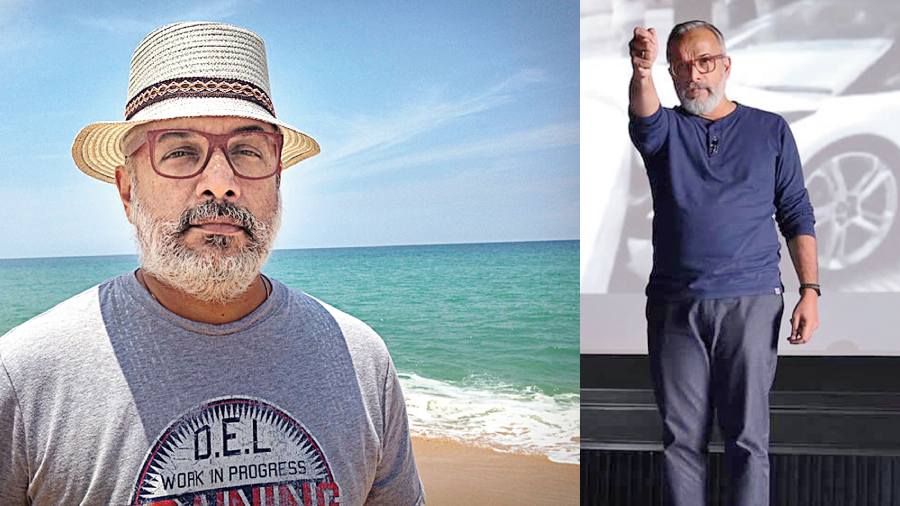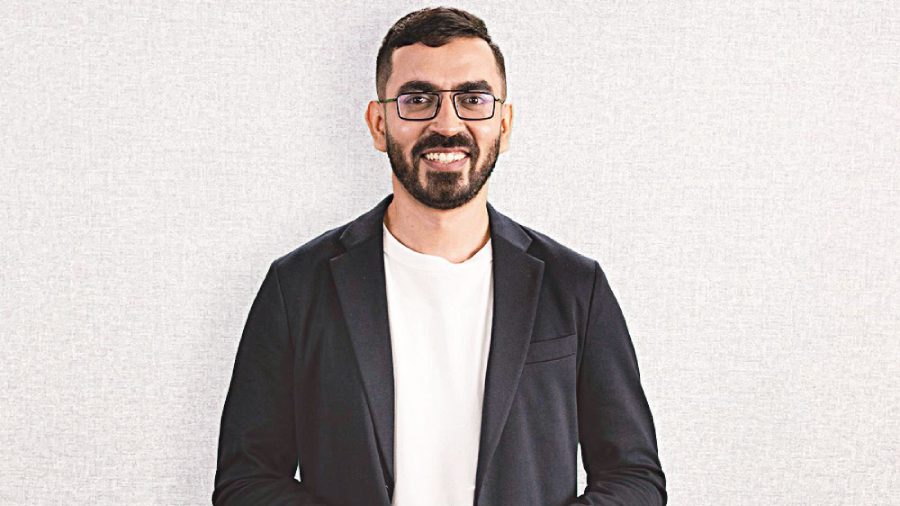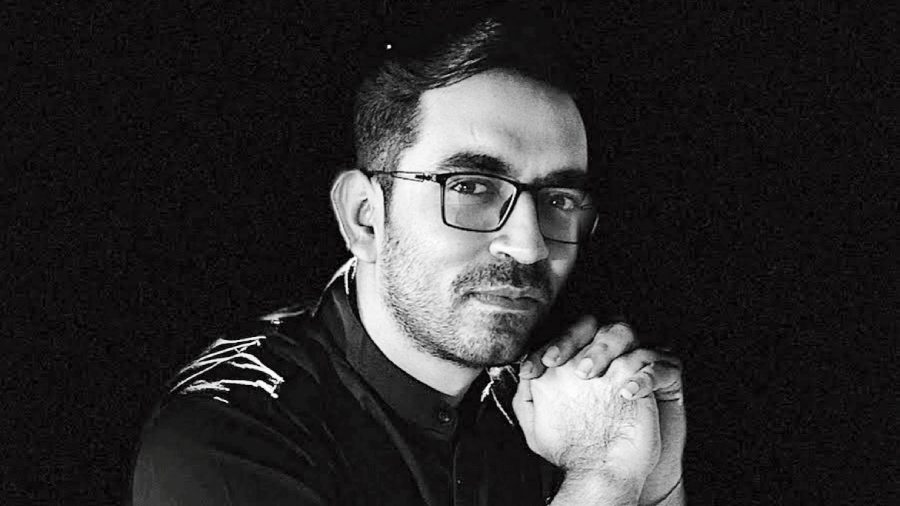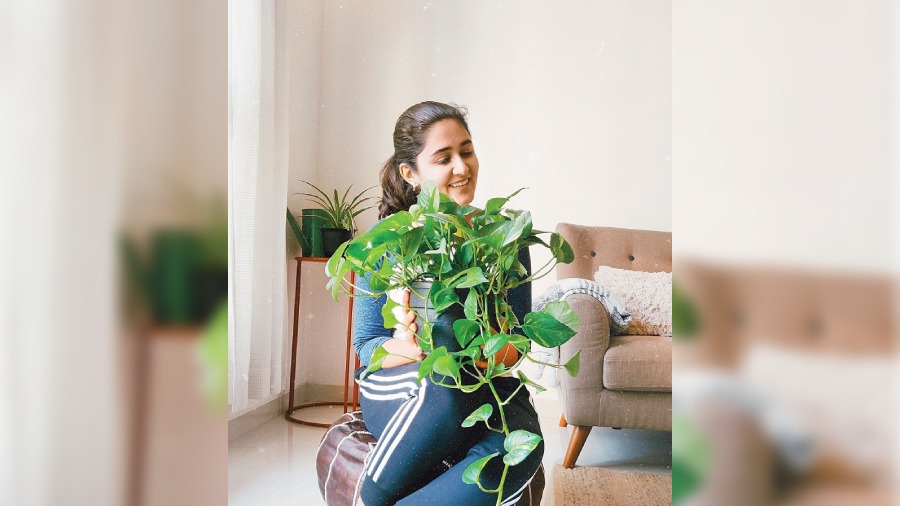Garden Up by
Ekta Chaudhary
Subscribers: 1.42m
During the early days of the pandemic, many turned towards gardening as a hobby even though knowledge about what to plant and when were not our biggest strength. This was when we turned to channels powered by the likes of Ekta Chaudhary. In a conversational manner, she has been teaching India to grow plants, make our lives better and our surroundings greener.
Q How has YouTube changed your life and at the same time, is it a challenge to constantly put out quality videos?
The concept of YouTubing changed my life in two ways. One is to think that generating content can generate revenue as a business. This is not something that I thought was possible.
Second, everything that content creation requires, right from camera work, to light work, to editing, are skills that I have acquired because I started this journey of YouTube. These are skills I would had never picked up, didn’t learn in school, or in any class or course. This is something that I learnt in the process because I wanted to create my content. Interestingly, all of this I actually learnt from YouTube itself. It’s like life coming a full circle.
We also started an online gardening and decor store called Garden Up two years ago. Coming from a biology background I had no idea about operating or designing an e-commerce website. Setting up and running the online store actually required a lot of skills, like coding, accounting, product photography to name a few, all of which came from watching YouTube.
Regarding the frequency of posting content, it can vary from person to person or channel to channel. We have divided our content into three categories. There are two categories where we create content once or twice a month. These include basic gardening videos and Beyond Garden, which is a science series we put out every month. The third is ‘how-to’ content, which is very personal to me, where the focus is on the plants that I grow in my garden. Now that’s something that I do as and when I feel like sharing interesting bits with the audience.
I don’t feel as if there is a challenge of constantly putting out quality videos because I still make content when I enjoy, or I feel like doing it. And the reason behind it is that my YouTube journey began because I wanted to do something that creatively satisfied me. This is something that I do for my happiness. And that has become the motto… I now do this full-time.
Q Gardening space is limited in cities. What do people look for in your channel?
Most of the audience that I have is urban. They are limited by space, but what they’re looking for is more than just the how of gardening. For example, ‘How are we supposed to grow the plant?’ Instead, what they’re seeking is the ‘why’ of things. For example, ‘Why does one need to take a cutting? Why do you put it in water? Why is it better to grow plants in soil than water?’ And this is something that comes to me from my academic background; I have finished a PhD in ecology. Ecology is the study of nature, the study of natural ecosystems.
Even though I may not be able to identify the plant by name, I can look at the plant on its morphology, its physical appearance, and tell you how you should take care of it. I am able to bring science to my content. And that is what my audience is looking for in the channel. But this is not how we started; I just started sharing what I knew and I realised that people were actually connecting to the science content on the channel.
Q In the West, gardening enthusiasts plant seeds on time after consulting a number of apps. In India, we don’t always play by the rulebook. Does that make it difficult to offer gardening tips?
Our channel has a wide variety of audience, both in India and internationally. We have 30 per cent audience which comes from the US or North America, or the Middle East or even Southeast Asia. Audiences come to the channel for gardening ideas and science. They’re coming for interesting stories. In fact, one of the reasons we have kept our content in English on Garden Up is so that we can appeal to a global audience. We have now started a Hindi channel to reach out to a larger domestic audience.
When you talk about science or playing by the rulebook, that’s more for agriculture; India also has some very sophisticated agriculture practices, which are very scientific, which are laid down by IARI or Indian Agricultural Research Institute. And they have centres across the country. I say this with a lot of confidence because I come from a farming community. My family, my extended family, are still into agriculture. There are some very fine practices that are laid down by the institute when it comes to agriculture. I know that IARI and other similar institutes have been trying to reach a large farming community now through digitalisation. When it comes to ‘home gardening’, things are slightly different, both in India and abroad. We are still figuring out how to not kill houseplants and what plant does well in what region.
Q Many are trying out different herbs, like rosemary, thyme and so on. What kind of shift are you noticing in gardening trends?
I think the trends these days are led by aspirations that are in turn inspired by social media. For instance, when you think of rosemary, it’s very exotic and that may entice a lot of people to want to grow rosemary. Now what is required is the role I play, of explaining that rosemary is a temperate-region plant, whereas India is a tropical country and that there are differences in climate and humidity. I try to make people aware that if you’re a gardening beginner, think about plants that grow in tropical countries. Growing a money plant, for example, in India, or a bird of paradise or a monstera is way easier than growing it in Europe or the US. Because these are tropical plants that have evolved to grow in tropical forests. What people basically need to understand is the kind of region they stay in and what plants do well in that region.
Once a person starts the gardening journey, there is a feedback loop. You try something then you fail and you’ll try and figure out why you failed and you start again. A major trend, which I also talk about in my upcoming book, is that there’s definitely a move towards indoor plants or what are called house plants. Earlier, in the ’90s, when at least I was growing up, people mostly had flowering plants and fruits that were growing outside. And at that time, people also had space to grow them. But now we have moved to flats, apartments or condos, where there is just the balcony space. And here people are growing houseplants or indoor plants such as philodendrons, bamboos, peace lily, anthuriums, China dolls, ZZ plant, snake plant. These are all ornamental plants that are grown for just their leaves, for their foliage.
Q What are some of the plants you would suggest readers should plant in the coming weeks?
I’ve lived in Mumbai, Bangalore, Tamil Nadu, in North India, Delhi NCR and Dehradun. And, while I’m not sure about Bengal, I can share my learnings from the heavy monsoon that we see in Mumbai. For most of India, if you live in a place that receives heavy rainfall, then you must consider that sunlight becomes a limitation. So, it is advisable to not grow fruits and vegetables which need a lot of sunlight. Lean towards plants that are grown for the leaves, that is, house plants, which can be kept both indoors or outdoors. So I would say foliage plants, like areca palm, are great to grow right now. Grow caladium as they require a lot of moisture. Similarly, ferns and peace lilies also require a good amount of moisture in the air and high ambient humidity. If you happen to stay in a place where, right now, the monsoon is decent and you also get three-four hours of sunlight, you can grow herbs right now. For example, mint, coriander and so on.

Most of the audience that I have is urban. They are limited by space, but what they’re looking for is more than just the how of gardening. Instead, what they’re seeking is the ‘why’ of things. For example, ‘Why does one need to take a cutting? Why do you put it in water? Why is it better to grow plants in soil than water?’
Ekta Chaudhary (Garden Up)
Ekta Chaudhary: YouTube set-up
I have a set-up of two Canon DSLRs, four lenses, and microphones. I have heavily worked on researching the best microphones and I finally settled on a Rode lapel mic. My major time actually, when I was working on finding what equipment I should look at, was spent on mic, and I always thought that good content needs a good voice. A lot of people spend a lot of effort on camera, but I think mics are equally important. Now we have some professional lights too. The gadget set-up has changed over time, because now we also do third-party content. For instance, clients commission content and we have a very successful course on Skillshare. Depending on the requirements, we either get our own gadgets or rent them and in some cases we also work with a production team that carries their equipment.

Mad Stuff with Rob
Mad Stuff with Rob
Subscribers: 2.45m
Harun Robert. You know him well from the TV show M.A.D., which was all about DIY culture. The man now has a huge presence on YouTube, thanks to his friendly videos.
Q How different is it to make content for YouTube vis-a-vis on TV? Is the audience very different?
Very different, in fact poles apart. In spite of working in television space for close to a decade it took me a while to crack the YouTube formula. I had to literally unlearn to learn the medium.
My presentation style changed from a host to it being more conversational. It needed to feel like I was actually in a room conversing with my audience. From working on really large sets with a crew of sometimes close to a 100 people to converting a room to my studio and shooting with my own camera. Everything on television required months and months of pre-production planning but on YouTube I could plan and shoot literally on the same day. The medium allows that flexibility, which is great and it works well for my audience and me.
While creating content you have to keep in mind that the content on TV was consumed on a big screen whereas on YT people consume content mostly on a smaller screen, like their phones or tablets hence the way you shoot also changes completely.
Also, unlike TV where the audience watches content in a set-like format, in YouTube the beauty is that the audience is actually made to feel like they are transported into the space of the creator, be it their living room, bedroom or the studio. The connection is a lot more intimate.
Q How do you decide on the content that you put up on your channel?
It’s actually a mix of DIY and art-related content. I started off as a purely DIY channel but over time I gave myself the liberty to explore ideas beyond DIY. I started shooting myself creating art pieces and I’ve even explored creating music videos with animation.
I also realised that a majority of the audience consuming content on the platform is youth so I aged up my content by focusing more on pop culture stuff, which is also something I relate to and enjoy doing, though most of it can still be aspirational for kids if they are watching.
Over time I also realised the kind of impact my content was making on people’s lives, hence I keep it a mix of inspirational and educational apart from it just being entertaining. I want to help and motivate people to be more creative through my content. I try to teach new techniques, work with new materials, pick up new and different art styles at the same time keeping the content relevant.
I faced a lot of challenges when I decided to pursue art as a career, primarily because of the lack of exposure so through my channel I aim to introduce my audience to a whole spectrum of art and its possibilities. I make sure that each video and project is fun and unique with an interesting takeaway.
Q What got you interested in DIY projects?
I get joy from working with materials so my love for DIY projects started at a very young age, even before the term DIY was actually coined.
As a child, I used to create my own race tracks for my tiny cars with bridges and tunnels out of empty cereal boxes and stuff lying around in the house. Sometimes my race track would actually span across the room much to the annoyance of my parents. I once even recreated the Statue of Liberty with old cartons at the age of eight for a competition in school.
This love for working with materials surely came in handy when I did my bachelors in fine art from College of Art and especially as I did my masters in animation film-making at the National Institute of Design, Ahmedabad. I used to work with different materials to create my models and tiny sets for my stop motion films/projects.
And then when I finally got an opportunity to create the TV show M.A.D was when I could explore this love for DIY to its fullest.
Now with my DIY channel and the community I have built around it I get to pick different DIY projects for each video, basis on what my audience has requested or what I want to experiment with and further teach my audience. My motto is, “Why BUY when you can DIY.”
Q With a few million subscribers, what are some of the lessons you have learnt?
The medium is constantly evolving. You need to keep reinventing yourself to ensure that your audience continuously stays engaged. It’s not enough to just shoot and upload content on your channel, what’s more important is to engage with your audience in different ways, be it YouTube Lives, responding to comments on the video, use of community tab and so on.
There are no shortcuts to success so you have to work very hard and be smart. There are lots of new talented creators so if you slack people will easily move on to the next big thing.
There have been quite a few ups and downs as well. It’s not easy to build a community of millions of subscribers and art lovers. So even when the views go down and the videos do not trend you need to remind yourself about your mission and why you’ve started the channel. For me it’s always been the love for art and for building a healthy happy community of like-minded creative people.

It’s not enough to just shoot and upload content on your channel, what’s more important is to engage with your audience in different ways, be it YouTube Lives, responding to comments on the video, use of community tab and so on
Harun Robert (Mad Stuff with Rob)
Mad Stuff with Rob: YouTube set-up
My set-up is pretty basic and that’s the beauty of YouTube. I have a small studio space equipped with all art supplies and basic camera equipment. We are a small two-member team. Not just the art but the shoot and edit too happen
in-house.
I generally use a one-camera set-up (or a multiple camera set-up if the project requires it). I shoot all my content on my Sony A6500 and edit on Premiere Pro and in case I am creating animation content then my go-to software is Dragon frame. I also use Photoshop to make all my art, illustrations, storyboards and so on.
Since my studio is not completely soundproof I use lapel mics and an overhead Rode mic for back-up.For lighting I have a softbox, small lights like Aperture MC and a couple of LED panels that do the job well.
Also for the longest time I used a DIY overhead rig for my camera.That I made with PVC pipes and wooden stands. I still use it at times when I’m filming with a smaller camera.

Pixel Viilage by Radhakrishnan Chakyat
Pixel Viilage by Radhakrishnan Chakyat
Subscribers: 974k
Vloggers are constantly looking for ways to make their videos better and shutterbugs want to take innovative shots. Radhakrishnan Chakyat helps to achieve this through his well-researched YouTube channel, Pixel Viilage.
Q Yours is a trusted channel. What’s more important to being a success on YouTube — putting out relevant content without really caring about quality or coming up with well-researched videos? What gets you more subscribers?
Pixel Viilage YouTube Channel was created in February 2017 and we started publishing our content in September 2017. From that time to now, we’ve always concentrated on creating well-researched content only. Thanks to my advertising background, we also made sure that these videos are well produced and packaged too.
Q What made you start Pixel Viilage?
I have been a commercial photographer for more than two and a half decades. Also been brand ambassadors for a few camera and lighting brands. So, I used to travel a lot on both professional assignments and brand activities, during which I got to interact with thousands of photographers. And I realised the need for education. It remained in the back of my mind for many years, and during 2016 I gathered sufficient courage to take a break from my active photography career and formed Pixel Viilage. We started the YouTube Channel first, and in 2019, we launched our online photography learning website www.pixelviilage.com.
Q Youngsters want to become vloggers and are constantly looking at ways to improve their camera game. What are some of the common mistakes a newbie to vlogging makes and do you have any advice for them?
Digital innovations have made photography and video-making more accessible and affordable. Today, anyone with a smartphone and Rs 100 worth of mobile data service can not only watch the entire world of creators, but also create their own content and put it out there for the world to see. Probably due to this convenience, and the eagerness to be seen out there as a creator, many jump into the middle of it without acquiring sufficient understanding of the art and craft of making the content. I also see them lacking patience and endurance.
Q What kind of photography do you personally enjoy? Some like wildlife, some appreciate architecture... what works for you?
Due to my engagements with Pixel Village, I have completely been away from commercial photography for the past three years. But my favourite genre has always been lifestyle and people photography. I like people and interacting with them.

Digital innovations have made photography and video-making more accessible and affordable. Today, anyone with a smartphone and Rs 100 worth of mobile data service can not only watch the entire world of creators, but also create their own content and put it out there for the world to see
Radhakrishnan Chakyat (Pixel Village)
Radhakrishnan Chakyat: YouTube set-up
Thanks to my advertising background as a photographer and film-maker, I was sufficiently equipped with both technology and understanding to create professionally good-looking content. We used to use DSLRs and LED lights when we started out. But now, we have the newest mirrorless cameras, very high-quality lighting systems, audio devices and editing systems. And, of course, I’ve been extremely lucky to have a bunch of very talented young team of creators with me too.

Pranjal Kamra
Pranjal Kamra
Subscribers: 4.3m
Pay later cards are scamming you?’, ‘Want to retire before 40?’, ‘Why I don’t invest in cryptos?’… these and many more finance-related questions are answered in an easy-to-comprehend style of Pranjal Kamra, who has a massive following on YouTube and is also the face of the company Finology, which is all about finances and investing.
Q How has YouTube changed your life and what’s a usual day like?
Finology’s YouTube community has played an important role in making us a fintech brand. It has helped me reach a wider audience base, which I couldn’t through any other medium. Coming to a usual day in my life, I try to stay as productive as I can. If I’m in the office, I try to keep the environment very light, hold brainstorming sessions with my teams, research content for my videos, shoot them and sometimes, I even play foosball or TT with everyone.
Q In the finance world, there are constant updates, so older videos become redundant. How do you make sure your videos remain up to date?
‘Long-term impact’ is what I look for. And this helps me eliminate any irrelevant trend-driven topic, which might not add value to my viewers’ knowledge. And in case there are changes or add-on updates to something I have already made a video on, I make sure to make a follow-up video.
Q How do you go about choosing videos for the channel? How do you ensure there is objectivity and do not get swayed by advertisers?
My vision behind making any YouTube video is to be absolutely clear with every point that I am putting forth. I rarely do any sort of brand collaborations because being biased wouldn’t do good for my viewers. Any video can get viral but what matters is the value it adds to the viewer’s knowledge. And for that, I keep asking myself the following questions:
- Will the content add value to the viewer/reader?
- Do I really believe in what I am saying?
- Is your content helping you or them?
Q What kind of traction does YouTube Shorts bring to your channel?
I really like making YouTube Shorts and find them very well suited for expanding the channel’s reach. However, I believe that reputation and trust are factors enriched by long-form videos.


I really like making YouTube Shorts and find them very well-suited for expanding the channel’s reach. However, I believe that reputation and trust are factors enriched by long-form videos
Pranjal Kamra
Pranjal Kamra: YouTube set-up
I try to keep everything as minimal as it can be. Earlier, I used to shoot all videos in the office space, but now we have created a small dedicated studio where the entire process takes place. The visible set-up only comprises a dark wall and a table. And for shooting, all I use is a softbox and a camera or my iPhone. I am still trying to do better with the videography, though.
